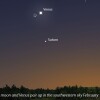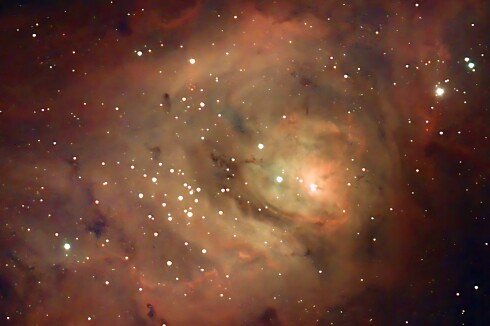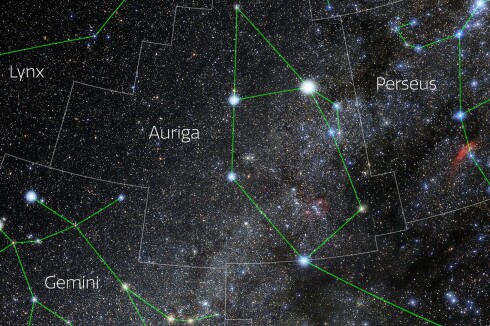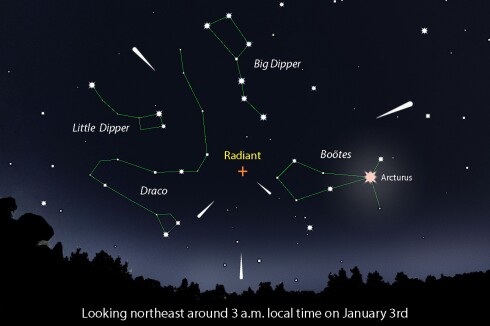If you've been watching the moon for the past week you may have seen it cozying up to one or more bright planets in the evening sky. That's no coincidence. As it orbits the Earth each month it circles around the entire sky. Earth and the rest of the planets orbit the sun in approximately in the same plane, which the moon also shares. That's why it passes each and every planet during its monthly saunter.
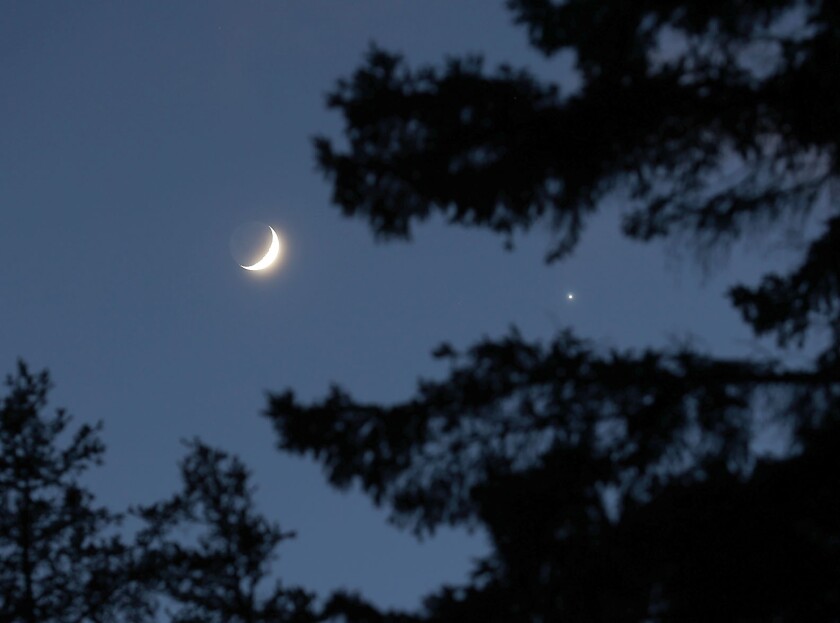
On Jan. 3 the thick crescent lined up with Venus and caught a lot of people's attention. The same way you or I might make a delicious dish by combining multiple ingredients, the combination of Venus and the moon was an unforgettable sight that was more than a simple sum of its parts. Then on Jan. 4 the waxing crescent passed Saturn, and six nights later joined Jupiter.
ADVERTISEMENT
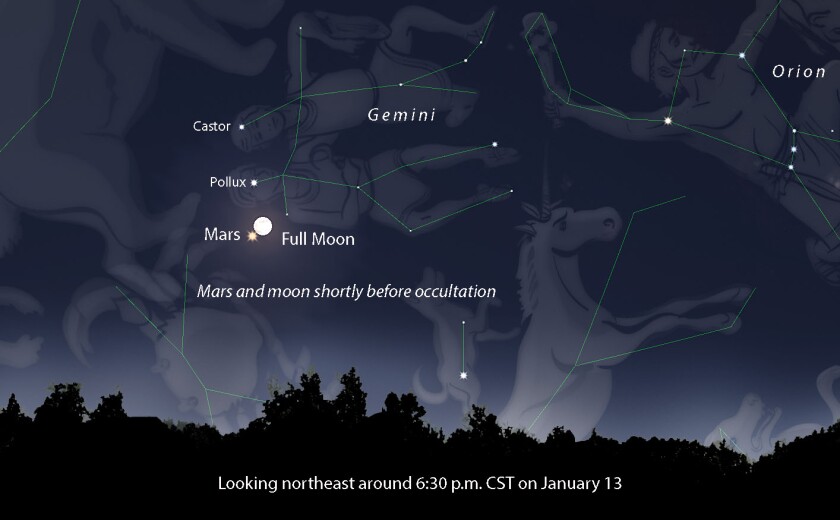
There are currently four bright planets spread across the evening sky. The fourth and final to get a lunar visit will be Mars on Monday, Jan. 13. Early that evening, face east and the full Wolf Moon will stare you in the face. Look a little below and to its left and you'll spot a bright, orange-red "star." That's Mars.
The Red Planet is extra bright this year because Earth and Mars are lined up together on the same side of the sun at opposition. From our perspective Mars lies directly opposite the sun in the sky, rising when it sets and setting when it rises. In the coming week, the two planets will be closer than they've been in nearly two years, separated by just 60 million miles. As you already know, close is a relative term in astronomy. A transcontinental jet traveling at 600 miles per hour would take more than 11 years to fly there.
At 5:30 p.m. CST on Monday evening, three full-moon-diameters separate the moon and Mars. That gap shrinks as the minutes tick by. By 7 p.m. the two luminaries will be just one moon-diameter apart. Their separation narrows because the moon is moving to the left (east) in its orbit at more than 2,300 miles per hour. Mars is also on the move, but it's relatively so much farther away it appears to travel with the speed of a three-toed sloth compared to the cheetah moon.
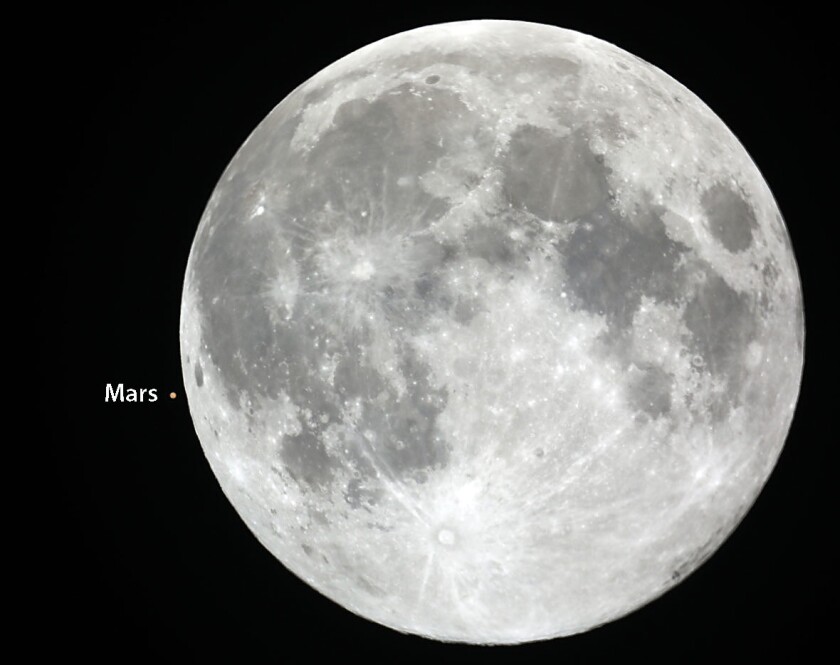
The moon finally nudges up and starts to cover the planet at 8:13 p.m. Mars won't vanish in an instant because it's a disk, not a point of light like a star. It will take the moon about 31 seconds to completely hide it from view. Then for the next hour the sky will be Mars-less, as if the Wolf Moon ate it for lunch.
While Mars is as brilliant as Sirius, the brightest star in the nighttime sky, the moon is far brighter, so it will be difficult to pick out the planet with the naked eye 10 or 15 minutes before and after the occultation. How long can you keep it in view? And how many minutes after Mars pops back into sight until you see it again?
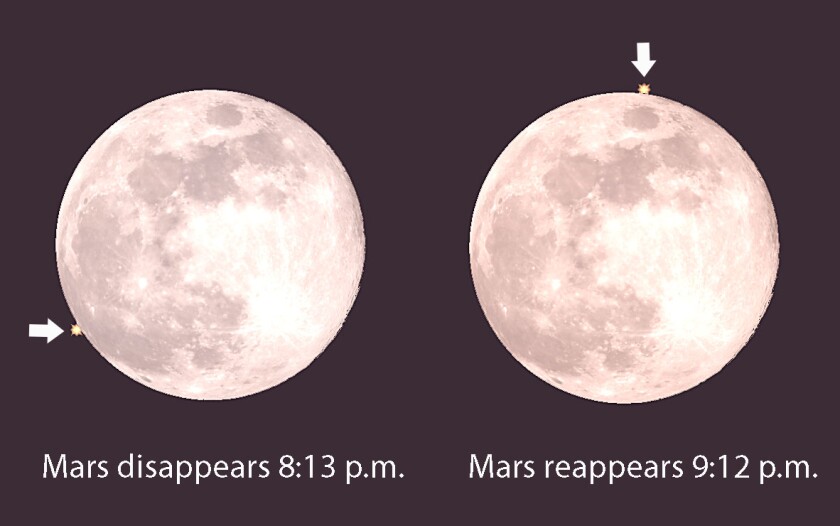
When Mars gets lost in the glare bring out your binoculars. Propped against the top of an open car door or braced against a pole to keep them steady, you'll be able to track the planet up to the moon's edge and again when it returns to view.
A small telescope is even better. With a magnification of 75x or higher you can see the planet's shape and watch the moon nibble away at it. Mars' reappearance will be even more dramatic, with the planet "rising" from behind the moon's cratered edge into the dark sky.
ADVERTISEMENT
Planetary occultations aren't just fun to watch, they teach us a little about the moon — how fast it moves in its orbit and the fact that it has virtually no atmosphere. Mars looks sharp, bright and undistorted both coming and going. A substantial lunar atmosphere would warp its shape and cause the planet to gradually fade as it approached the moon's edge.
Good news! The occultation is visible across the entire country (except the Key West, Florida area) and much of Canada. To find out when Mars disappears and reappears for your city, go to lunar-occultations.com/iota/planets/0114mars.htm . The times listed are Universal Time. To convert to EST, subtract 5 hours; 6 hours for CST; 7 hours for MST and 8 hours for PST. Let's hope the sky clears so we can all enjoy this rare spectacle.



